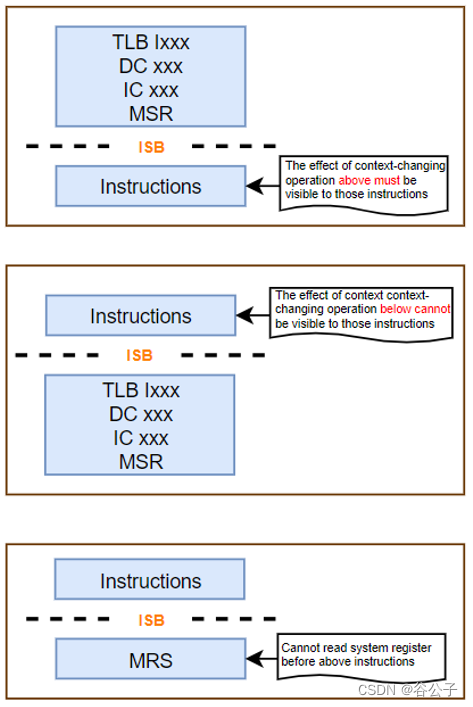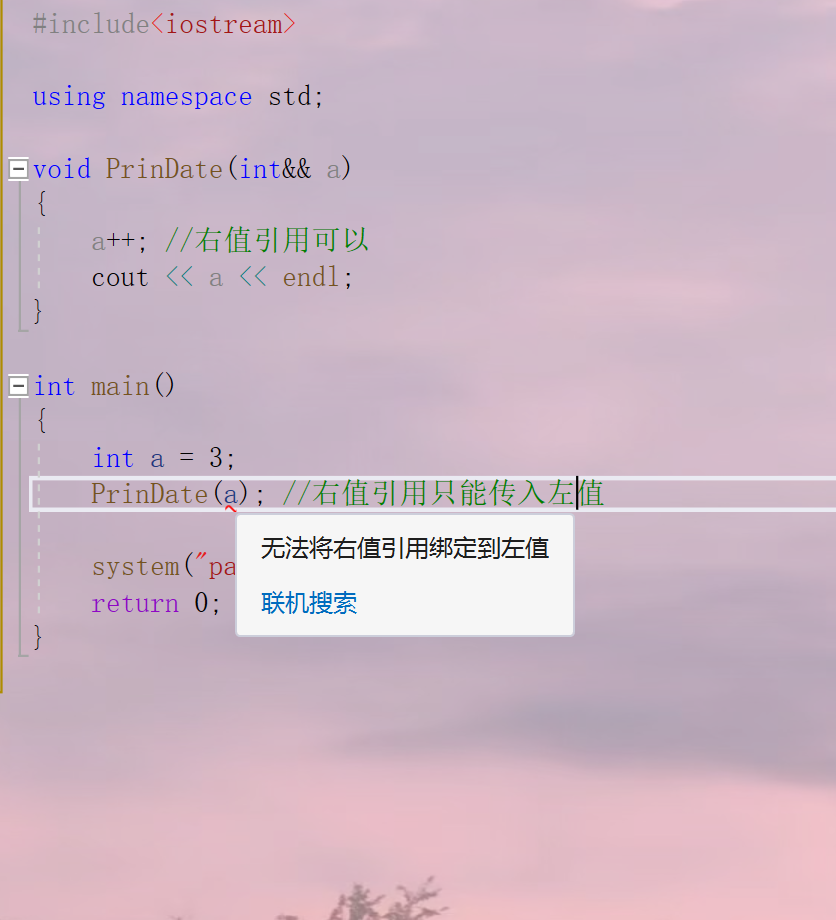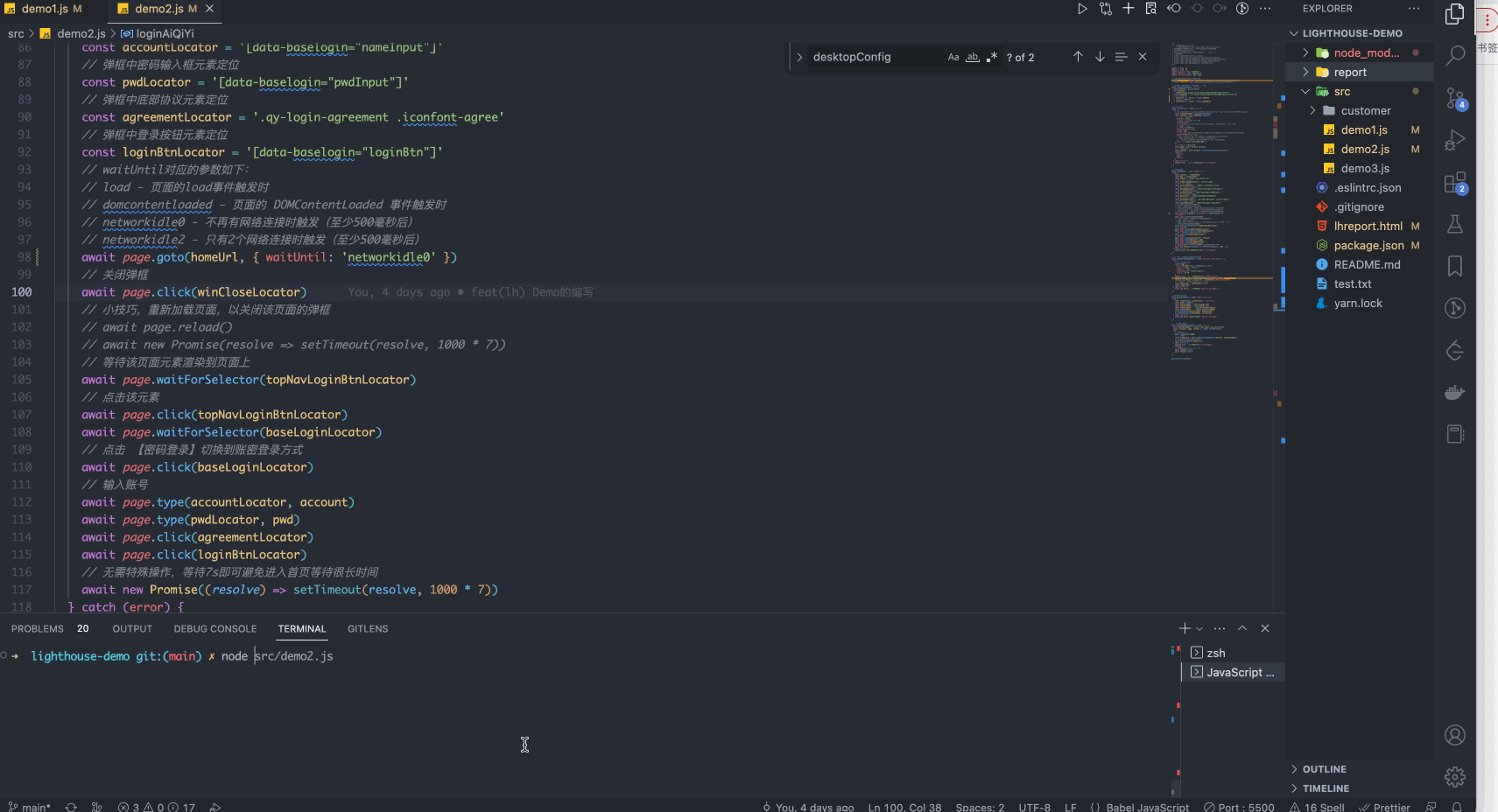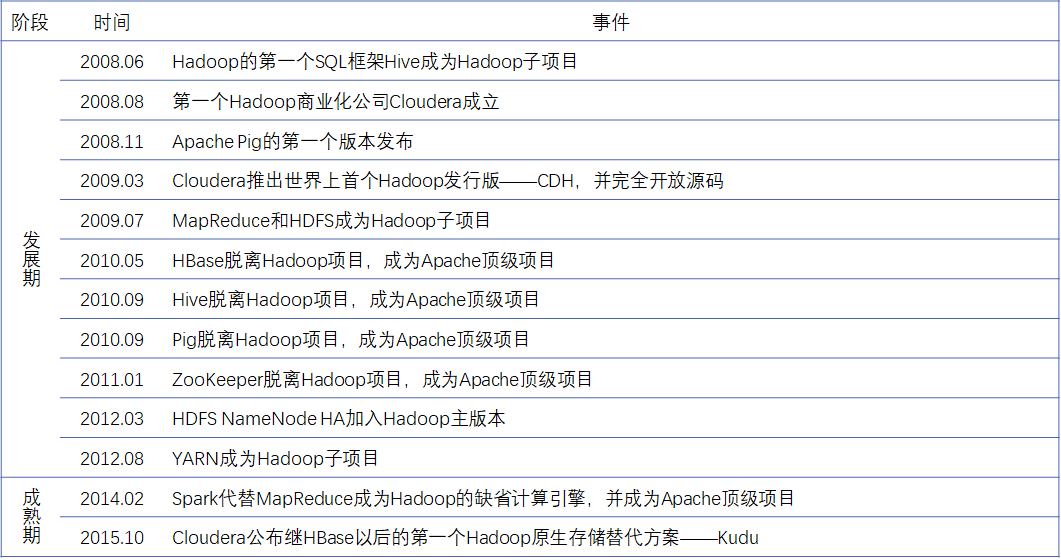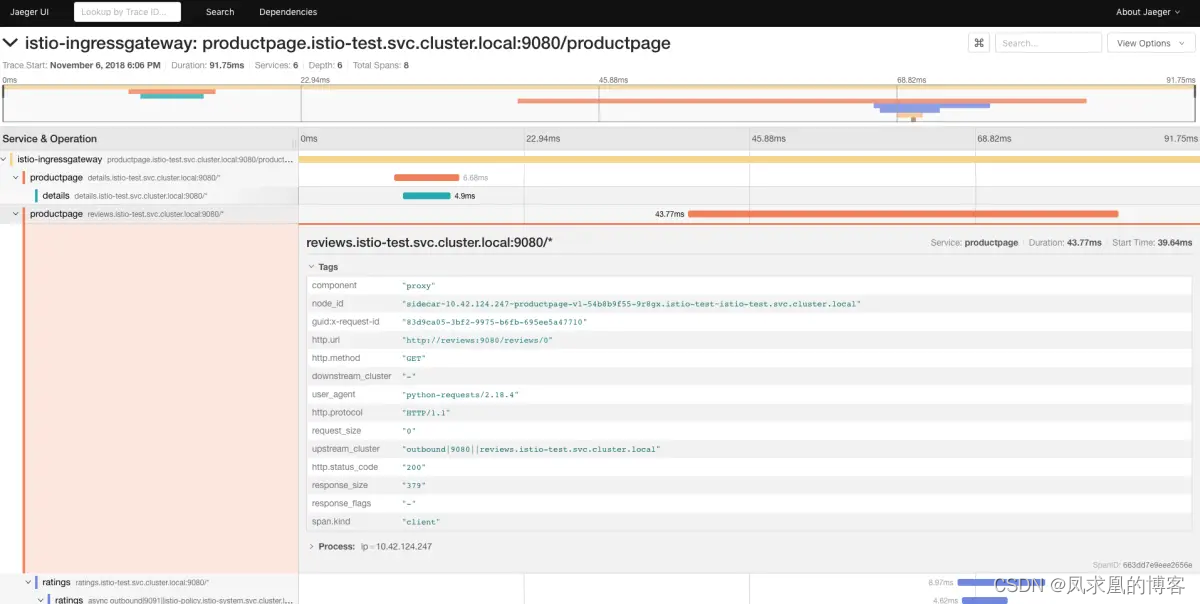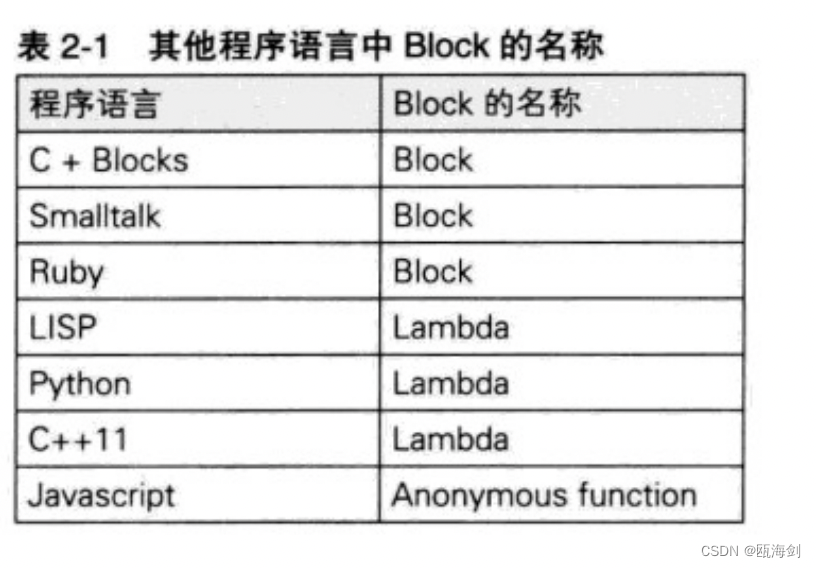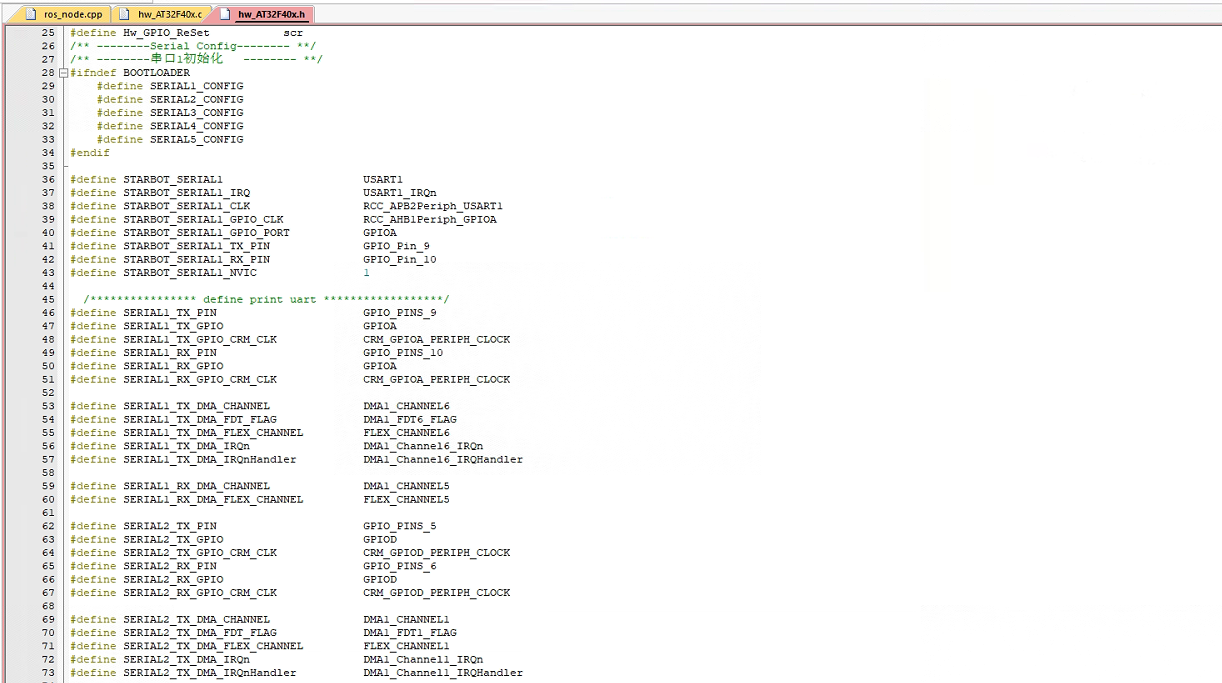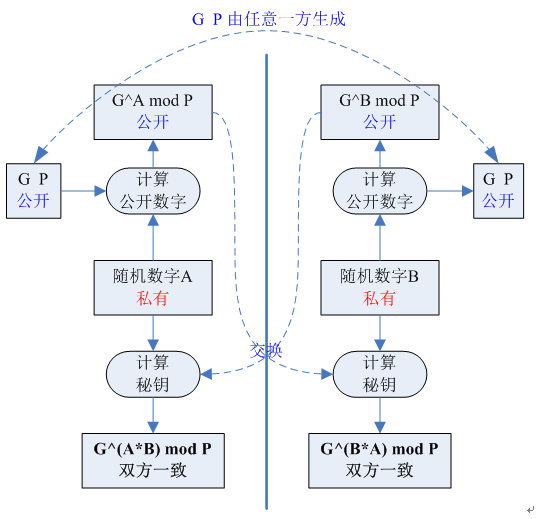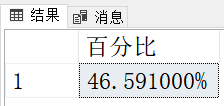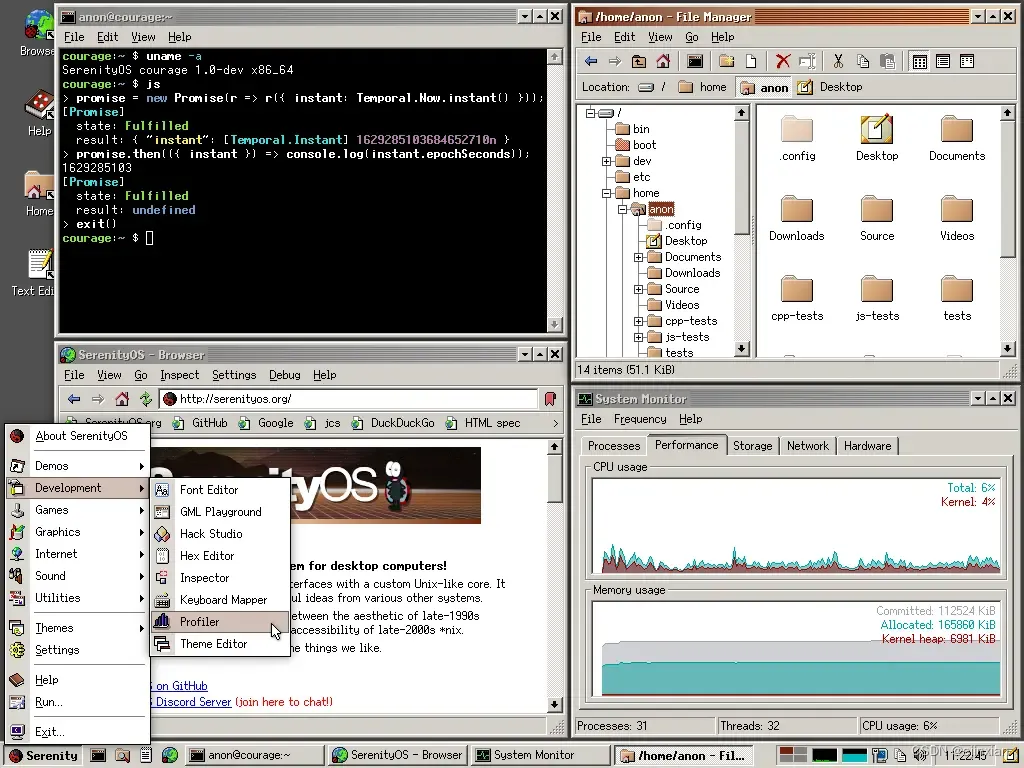A题
极端考虑, 只要存在一个前缀数组的最大公约数小于等于2, 将其放在数组最前端, 那么保证能够满足题目要求
数据范围这么小, 果断暴力
Serval and Mocha's Array
题目描述
Mocha likes arrays, and Serval gave her an array consisting of positive integers as a gift.
Mocha thinks that for an array of positive integers $ a $ , it is good iff the greatest common divisor of all the elements in $ a $ is no more than its length. And for an array of at least $ 2 $ positive integers, it is beautiful iff all of its prefixes whose length is no less than $ 2 $ are good.
For example:
$ [3,6] $ is not good, because $ \gcd(3,6)=3 $ is greater than its length $ 2 $ .
$ [1,2,4] $ is both good and beautiful, because all of its prefixes whose length is no less than $ 2 $ , which are $ [1,2] $ and $ [1,2,4] $ , are both good.
$ [3,6,1] $ is good but not beautiful, because $ [3,6] $ is not good.
Now Mocha gives you the gift array $ a $ of $ n $ positive integers, and she wants to know whether array $ a $ could become beautiful by reordering the elements in $ a $ . It is allowed to keep the array $ a $ unchanged.
输入格式
Each test contains multiple test cases. The first line contains the number of test cases $ t $ ( $ 1\leq t\leq 500 $ ). The description of the test cases follows.
The first line of each test case contains a single integer $ n $ ( $ 2\leq n\leq 100 $ ) — the length of array $ a $ .
The second line of each test case contains $ n $ integers $ a_1,a_2,\ldots,a_n $ ( $ 1\leq a_1,a_2,\ldots,a_n\leq 10^6 $ ) — the elements of array $ a $ .
输出格式
For each test case, print Yes if it is possible to reorder the elements in $ a $ to make it beautiful, and print No if not.
You can output Yes and No in any case (for example, strings yEs, yes, Yes and YES will be recognized as a positive response).
样例 #1
样例输入 #1
6
2
3 6
3
1 2 4
3
3 6 1
3
15 35 21
4
35 10 35 14
5
1261 227821 143 4171 1941样例输出 #1
No
Yes
Yes
No
Yes
Yes提示
In the first test case, neither $ [3,6] $ nor $ [6,3] $ are beautiful, so it's impossible to obtain a beautiful array by reordering the elements in $ a $ .
In the second test case, $ [1,2,4] $ is already beautiful. Keeping the array $ a $ unchanged can obtain a beautiful array.
/*
⣿⣿⣿⣿⣿⣿⡷⣯⢿⣿⣷⣻⢯⣿⡽⣻⢿⣿⣿⣿⣿⣿⣿⣿⣿⣿⣿⣿⣿⣿⣿⣿⣿⣿⣿⣇⠸⣿⣿⣆⠹⣿⣿⢾⣟⣯⣿⣿⣿⣿⣿⣿⣽⣻⣿⣿⣿⣿⣿⣿⣿
⣿⣿⣿⣿⣿⣿⣻⣽⡿⣿⣎⠙⣿⣞⣷⡌⢻⣟⣿⣿⣿⣿⣿⣿⣿⣿⣿⣿⣿⣷⣿⣿⣿⣿⣿⣿⡄⠹⣿⣿⡆⠻⣿⣟⣯⡿⣽⡿⣿⣿⣿⣿⣽⡷⣯⣿⣿⣿⣿⣿⣿
⣿⣿⣿⣿⣿⣿⣟⣷⣿⣿⣿⡀⠹⣟⣾⣟⣆⠹⣯⣿⣿⣿⣿⣿⣿⣿⣿⣿⣿⣿⣿⣿⣿⣿⣿⣿⡇⢠⡘⣿⣿⡄⠉⢿⣿⣽⡷⣿⣻⣿⣿⣿⣿⡝⣷⣯⢿⣿⣿⣿⣿
⣿⣿⣿⣿⣿⣿⣯⢿⣾⢿⣿⡄⢄⠘⢿⣞⡿⣧⡈⢷⣿⣿⣿⣿⣿⣿⣿⣿⣿⣿⣿⣿⣿⣿⣿⣿⡇⢸⣧⠘⣿⣷⠈⣦⠙⢿⣽⣷⣻⣽⣿⣿⣿⣿⣌⢿⣯⢿⣿⣿⣿
⣿⣿⣿⣿⣿⣿⣟⣯⣿⢿⣿⡆⢸⡷⡈⢻⡽⣷⡷⡄⠻⣽⣿⣿⡿⣿⣿⣿⣿⣿⣿⣷⣿⣿⣿⣿⣏⢰⣯⢷⠈⣿⡆⢹⢷⡌⠻⡾⢋⣱⣯⣿⣿⣿⣿⡆⢻⡿⣿⣿⣿
⣿⣿⣿⣿⣿⣿⡎⣿⢾⡿⣿⡆⢸⣽⢻⣄⠹⣷⣟⣿⣄⠹⣟⣿⣿⣟⣿⣿⣿⣿⣿⣿⣽⣿⣿⣿⡇⢸⣯⣟⣧⠘⣷⠈⡯⠛⢀⡐⢾⣟⣷⣻⣿⣿⣿⡿⡌⢿⣻⣿⣿
⣿⣿⣿⣿⣿⣿⣧⢸⡿⣟⣿⡇⢸⣯⣟⣮⢧⡈⢿⣞⡿⣦⠘⠏⣹⣿⣽⢿⣿⣿⣿⣿⣯⣿⣿⣿⡇⢸⣿⣿⣾⡆⠹⢀⣠⣾⣟⣷⡈⢿⣞⣯⢿⣿⣿⣿⢷⠘⣯⣿⣿
⣿⣿⣿⣿⣿⣿⣿⡈⣿⢿⣽⡇⠘⠛⠛⠛⠓⠓⠈⠛⠛⠟⠇⢀⢿⣻⣿⣯⢿⣿⣿⣿⣷⢿⣿⣿⠁⣾⣿⣿⣿⣧⡄⠇⣹⣿⣾⣯⣿⡄⠻⣽⣯⢿⣻⣿⣿⡇⢹⣾⣿
⣿⣿⣿⣿⣿⣿⣿⡇⢹⣿⡽⡇⢸⣿⣿⣿⣿⣿⣞⣆⠰⣶⣶⡄⢀⢻⡿⣯⣿⡽⣿⣿⣿⢯⣟⡿⢀⣿⣿⣿⣿⣿⣧⠐⣸⣿⣿⣷⣿⣿⣆⠹⣯⣿⣻⣿⣿⣿⢀⣿⢿
⣿⣿⣿⣿⣿⣿⣿⣿⠘⣯⡿⡇⢸⣿⣿⣿⣿⣿⣿⣿⣧⡈⢿⣳⠘⡄⠻⣿⢾⣽⣟⡿⣿⢯⣿⡇⢸⣿⣿⣿⣿⣿⣿⡀⢾⣿⣿⣿⣿⣿⣿⣆⠹⣾⣷⣻⣿⡿⡇⢸⣿
⣿⣿⣿⣿⣿⣿⣿⣿⡇⢹⣿⠇⢸⣿⣿⣿⣿⣿⣿⣿⣿⣷⣄⠻⡇⢹⣆⠹⣟⣾⣽⣻⣟⣿⣽⠁⣾⣿⣿⣿⣿⣿⣿⣇⣿⣿⠿⠛⠛⠉⠙⠋⢀⠁⢘⣯⣿⣿⣧⠘⣿
⣿⣿⣿⣿⣿⣿⣿⣿⣿⡈⣿⡃⢼⣿⣿⣿⣿⣿⣿⣿⣿⣿⣿⣦⡙⠌⣿⣆⠘⣿⣞⡿⣞⡿⡞⢠⣿⣿⣿⣿⣿⡿⠛⠉⠁⢀⣀⣠⣤⣤⣶⣶⣶⡆⢻⣽⣞⡿⣷⠈⣿
⣿⣿⣿⣿⣿⣿⣿⣿⡿⠃⠘⠁⠉⠉⠉⠉⠉⠉⠉⠉⠉⠙⠛⠛⢿⣄⢻⣿⣧⠘⢯⣟⡿⣽⠁⣾⣿⣿⣿⣿⣿⡃⢀⢀⠘⠛⠿⢿⣻⣟⣯⣽⣻⣵⡀⢿⣯⣟⣿⢀⣿
⣿⣿⣿⣟⣿⣿⣿⣿⣶⣶⡆⢀⣿⣾⣿⣾⣷⣿⣶⠿⠚⠉⢀⢀⣤⣿⣷⣿⣿⣷⡈⢿⣻⢃⣼⣿⣿⣿⣿⣻⣿⣿⣿⡶⣦⣤⣄⣀⡀⠉⠛⠛⠷⣯⣳⠈⣾⡽⣾⢀⣿
⣿⢿⣿⣿⣻⣿⣿⣿⣿⣿⡿⠐⣿⣿⣿⣿⠿⠋⠁⢀⢀⣤⣾⣿⣿⣿⣿⣿⣿⣿⣿⣌⣥⣾⡿⣿⣿⣷⣿⣿⢿⣷⣿⣿⣟⣾⣽⣳⢯⣟⣶⣦⣤⡾⣟⣦⠘⣿⢾⡁⢺
⣿⣻⣿⣿⡷⣿⣿⣿⣿⣿⡗⣦⠸⡿⠋⠁⢀⢀⣠⣴⢿⣿⣽⣻⢽⣾⣟⣷⣿⣟⣿⣿⣿⣳⠿⣵⣧⣼⣿⣿⣿⣿⣿⣾⣿⣿⣿⣿⣿⣽⣳⣯⣿⣿⣿⣽⢀⢷⣻⠄⠘
⣿⢷⣻⣿⣿⣷⣻⣿⣿⣿⡷⠛⣁⢀⣀⣤⣶⣿⣛⡿⣿⣮⣽⡻⣿⣮⣽⣻⢯⣿⣿⣿⣿⣿⣿⣿⣿⣿⣿⣿⣿⣿⣿⣿⣿⣿⣿⣿⣿⣿⣿⣿⣿⣿⣿⣯⢀⢸⣿⢀⡆
⠸⣟⣯⣿⣿⣷⢿⣽⣿⣿⣷⣿⣷⣆⠹⣿⣶⣯⠿⣿⣶⣟⣻⢿⣷⣽⣻⣿⣿⣿⣿⣿⣿⣿⣿⣿⣿⣿⣿⣿⣿⣿⣿⣿⣿⣿⣿⣿⣿⣿⣿⣿⣿⣿⣿⣿⢀⣯⣟⢀⡇
⣇⠹⣟⣾⣻⣿⣿⢾⡽⣿⣿⣿⣿⣿⣆⢹⣶⣿⣻⣷⣯⣟⣿⣿⣽⣿⣿⣿⣿⣿⣿⣿⣿⣿⣿⣿⣿⣿⣿⣿⣿⣿⣿⣿⣿⣿⣿⣿⣿⣿⣿⣿⣿⣿⣿⡿⢀⡿⡇⢸⡇
⣿⣆⠹⣷⡻⣽⣿⣯⢿⣽⣻⣿⣿⣿⣿⣆⢻⣿⣿⣿⣿⣿⣿⣿⣿⣿⣿⣿⣿⣿⣿⣿⣿⣿⣿⣿⠛⢻⣿⣿⣿⣿⣿⣿⣿⣿⣿⣿⣿⣿⣿⣿⣿⣿⣿⠇⢸⣿⠇⣼⡇
⡙⠾⣆⠹⣿⣦⠛⣿⢯⣷⢿⡽⣿⣿⣿⣿⣆⠻⣿⣿⣿⣿⣿⣿⣿⣿⣿⣿⣿⣿⣿⣿⣿⣿⣿⠃⠎⢸⣿⣿⣿⣿⣿⣿⣿⣿⣿⣿⣿⣿⣿⣿⣿⣿⠏⢀⣿⣾⣣⡿⡇
⣿⣷⡌⢦⠙⣿⣿⣌⠻⣽⢯⣿⣽⣻⣿⣿⣿⣧⠩⢻⣿⣿⣿⣿⣿⣿⣿⣿⣿⣿⣿⣿⣿⣿⡏⢰⢣⠘⣿⣿⣿⣿⣿⣿⣿⣿⣿⣿⣿⣿⣿⣿⡿⠃⢀⢀⢿⣞⣷⢿⡇
⣿⣽⣆⠹⣧⠘⣿⣿⡷⣌⠙⢷⣯⡷⣟⣿⣿⣿⣷⡀⡹⣿⣿⣿⣿⣿⣿⣿⣿⣿⣿⣿⣿⣿⣷⣈⠃⣸⣿⣿⣿⣿⣿⣿⣿⣿⣿⣿⣿⣿⣿⠟⢀⣴⡧⢀⠸⣿⡽⣿⢀
⢻⣽⣿⡄⢻⣷⡈⢿⣿⣿⢧⢀⠙⢿⣻⡾⣽⣻⣿⣿⣄⠌⢿⣿⣿⣿⣿⣿⣿⣿⣿⣿⣿⣿⣿⣿⣿⣿⣿⣿⣿⣿⣿⣿⣿⣿⣿⣿⣿⠛⢁⣰⣾⣟⡿⢀⡄⢿⣟⣿⢀
⡄⢿⣿⣷⢀⠹⣟⣆⠻⣿⣿⣆⢀⣀⠉⠻⣿⡽⣯⣿⣿⣷⣈⢻⣿⣿⣿⣿⣿⣿⣿⣿⣿⣿⣿⣿⣿⣿⣿⣿⣿⣿⣿⣿⣿⣿⡿⠋⢀⣠⠘⣯⣷⣿⡟⢀⢆⠸⣿⡟⢸
⣷⡈⢿⣿⣇⢱⡘⢿⣷⣬⣙⠿⣧⠘⣆⢀⠈⠻⣷⣟⣾⢿⣿⣆⠹⣿⣿⣿⣿⣿⣿⣿⣿⣿⣿⣿⣿⣿⣿⣿⣿⣿⣿⣿⡿⠋⣠⡞⢡⣿⢀⣿⣿⣿⠇⡄⢸⡄⢻⡇⣼
⣿⣷⡈⢿⣿⡆⢣⡀⠙⢾⣟⣿⣿⣷⡈⠂⠘⣦⡈⠿⣯⣿⢾⣿⣆⠙⠻⠿⠿⠿⠿⡿⣿⣿⣿⣿⣿⣿⣿⣿⣿⠿⠛⢋⣠⣾⡟⢠⣿⣿⢀⣿⣿⡟⢠⣿⢈⣧⠘⢠⣿
⣿⣿⣿⣄⠻⣿⡄⢳⡄⢆⡙⠾⣽⣿⣿⣆⡀⢹⡷⣄⠙⢿⣿⡾⣿⣆⢀⡀⢀⢀⢀⢀⢀⢀⢀⢀⢀⢀⢀⢀⣀⣠⣴⡿⣯⠏⣠⣿⣿⡏⢸⣿⡿⢁⣿⣿⢀⣿⠆⢸⣿
⣿⣿⣿⣿⣦⡙⣿⣆⢻⡌⢿⣶⢤⣉⣙⣿⣷⡀⠙⠽⠷⠄⠹⣿⣟⣿⣆⢙⣋⣤⣤⣤⣄⣀⢀⢀⢀⢀⣾⣿⣟⡷⣯⡿⢃⣼⣿⣿⣿⠇⣼⡟⣡⣿⣿⣿⢀⡿⢠⠈⣿
⣿⣿⣿⣿⣿⣷⣮⣿⣿⣿⡌⠁⢤⣤⣤⣤⣬⣭⣴⣶⣶⣶⣆⠈⢻⣿⣿⣆⢻⣿⣿⣿⣿⣿⣿⣷⣶⣤⣌⣉⡘⠛⠻⠶⣿⣿⣿⣿⡟⣰⣫⣴⣿⣿⣿⣿⠄⣷⣿⣿⣿
*/
#include <cstdio>
#include <iostream>
#include <algorithm>
#include <queue>
#include <cmath>
#include <cstring>
#include <string>
#include <stack>
#include <deque>
#include <map>
#include <set>
#include <bitset>
#include <unordered_map>
#include <unordered_set>
using namespace std;
#define ll long long
#define endl "\n"
#define R cin>>
#define S second
#define F first
#define ln cout<<endl;
#define rep(i, a, b) for (ll i = (a); i <= (b); i++)
#define repr(i, a, b) for (ll i = (a); i < (b); i++)
#define rrep(i, a, b) for (ll i = (b); i >= (a); i--)
#define rrepr(i, a, b) for (ll i = (b); i > (a); i--)
#define mem(a) memset((a),0,sizeof (a));
#define min(a,b) ((a)<(b)?(a):(b))
#define max(a,b) ((a)>(b)?(a):(b))
#define yes cout<<"YES"<<endl;
#define no cout<<"NO"<<endl;
#define debug cout<<"here!"<<endl;
ll cnt,n,m,t,ans,ant;
const int N=2e5+10;
const int INF=0x3f3f3f3f;
const ll llINF=0x3f3f3f3f3f3f3f3f;
ll arr[N];
string str;
inline ll read()
{
char c = getchar();int x = 0,s = 1;
while(c < '0' || c > '9') {if(c == '-') s = -1;c = getchar();}//是符号
while(c >= '0' && c <= '9') {x = x*10 + c -'0';c = getchar();}//是数字
return x*s;
}
void solve()
{
R n;
rep(i,1,n) R arr[i];
ans=0;
repr(i,1,n)
{
rep(j,i+1,n)
{
if(__gcd(arr[i],arr[j])<=2)
{
yes
return;
}
}
}
no
return;
}
int main()
{
ios::sync_with_stdio(false);cin.tie(0);cout.tie(0);
//所有输入用cin
//所有输出用cout
cin>>t;
while(t--)
solve();
return 0;
}B题
由于只能修改一次, 那么不回文区域必须为连续的, 若为不连续会将本来回文的字符修改为不回文的字符
所以只需要判断回文区域是否为连续的即可
先记录在0~n/2处不回文的最后一个字符的下标
然后遍历搜索第一个不回文的字符, 向下while搜索看看是否存在在回文终点前存在有回文的字符
Serval and Inversion Magic
题目描述
Serval has a string $ s $ that only consists of 0 and 1 of length $ n $ . The $ i $ -th character of $ s $ is denoted as $ s_i $ , where $ 1\leq i\leq n $ .
Serval can perform the following operation called Inversion Magic on the string $ s $ :
Choose an segment $ [l, r] $ ( $ 1\leq l\leq r\leq n $ ). For $ l\leq i\leq r $ , change $ s_i $ into 1 if $ s_i $ is 0, and change $ s_i $ into 0 if $ s_i $ is 1.
For example, let $ s $ be 010100 and the segment $ [2,5] $ is chosen. The string $ s $ will be 001010 after performing the Inversion Magic.
Serval wants to make $ s $ a palindrome after performing Inversion Magic exactly once. Help him to determine whether it is possible.
A string is a palindrome iff it reads the same backwards as forwards. For example, 010010 is a palindrome but 10111 is not.
输入格式
Each test contains multiple test cases. The first line contains the number of test cases $ t $ ( $ 1\leq t\leq 10^4 $ ). The description of the test cases follows.
The first line of each test case contains a single integer $ n $ ( $ 2\leq n\leq 10^5 $ ) — the length of string $ s $ .
The second line of each test case contains a binary string $ s $ of length $ n $ . Only characters 0 and 1 can appear in $ s $ .
It's guaranteed that the sum of $ n $ over all test cases does not exceed $ 2\cdot 10^5 $ .
输出格式
For each test case, print Yes if $ s $ can be a palindrome after performing Inversion Magic exactly once, and print No if not.
You can output Yes and No in any case (for example, strings yEs, yes, Yes and YES will be recognized as a positive response).
样例 #1
样例输入 #1
3
4
1001
5
10010
7
0111011样例输出 #1
Yes
Yes
No提示
In the first test case, Serval can perform Inversion Magic on the segment $ [1,4] $ . The string $ s $ will be 0110 after the magic.
In the second test case, Serval can perform Inversion Magic on the segment $ [1,3] $ . The string $ s $ will be 01110 after the magic.
In the third test case, Serval can't make $ s $ a palindrome by performing Inversion Magic exactly once.
/*
⣿⣿⣿⣿⣿⣿⡷⣯⢿⣿⣷⣻⢯⣿⡽⣻⢿⣿⣿⣿⣿⣿⣿⣿⣿⣿⣿⣿⣿⣿⣿⣿⣿⣿⣿⣇⠸⣿⣿⣆⠹⣿⣿⢾⣟⣯⣿⣿⣿⣿⣿⣿⣽⣻⣿⣿⣿⣿⣿⣿⣿
⣿⣿⣿⣿⣿⣿⣻⣽⡿⣿⣎⠙⣿⣞⣷⡌⢻⣟⣿⣿⣿⣿⣿⣿⣿⣿⣿⣿⣿⣷⣿⣿⣿⣿⣿⣿⡄⠹⣿⣿⡆⠻⣿⣟⣯⡿⣽⡿⣿⣿⣿⣿⣽⡷⣯⣿⣿⣿⣿⣿⣿
⣿⣿⣿⣿⣿⣿⣟⣷⣿⣿⣿⡀⠹⣟⣾⣟⣆⠹⣯⣿⣿⣿⣿⣿⣿⣿⣿⣿⣿⣿⣿⣿⣿⣿⣿⣿⡇⢠⡘⣿⣿⡄⠉⢿⣿⣽⡷⣿⣻⣿⣿⣿⣿⡝⣷⣯⢿⣿⣿⣿⣿
⣿⣿⣿⣿⣿⣿⣯⢿⣾⢿⣿⡄⢄⠘⢿⣞⡿⣧⡈⢷⣿⣿⣿⣿⣿⣿⣿⣿⣿⣿⣿⣿⣿⣿⣿⣿⡇⢸⣧⠘⣿⣷⠈⣦⠙⢿⣽⣷⣻⣽⣿⣿⣿⣿⣌⢿⣯⢿⣿⣿⣿
⣿⣿⣿⣿⣿⣿⣟⣯⣿⢿⣿⡆⢸⡷⡈⢻⡽⣷⡷⡄⠻⣽⣿⣿⡿⣿⣿⣿⣿⣿⣿⣷⣿⣿⣿⣿⣏⢰⣯⢷⠈⣿⡆⢹⢷⡌⠻⡾⢋⣱⣯⣿⣿⣿⣿⡆⢻⡿⣿⣿⣿
⣿⣿⣿⣿⣿⣿⡎⣿⢾⡿⣿⡆⢸⣽⢻⣄⠹⣷⣟⣿⣄⠹⣟⣿⣿⣟⣿⣿⣿⣿⣿⣿⣽⣿⣿⣿⡇⢸⣯⣟⣧⠘⣷⠈⡯⠛⢀⡐⢾⣟⣷⣻⣿⣿⣿⡿⡌⢿⣻⣿⣿
⣿⣿⣿⣿⣿⣿⣧⢸⡿⣟⣿⡇⢸⣯⣟⣮⢧⡈⢿⣞⡿⣦⠘⠏⣹⣿⣽⢿⣿⣿⣿⣿⣯⣿⣿⣿⡇⢸⣿⣿⣾⡆⠹⢀⣠⣾⣟⣷⡈⢿⣞⣯⢿⣿⣿⣿⢷⠘⣯⣿⣿
⣿⣿⣿⣿⣿⣿⣿⡈⣿⢿⣽⡇⠘⠛⠛⠛⠓⠓⠈⠛⠛⠟⠇⢀⢿⣻⣿⣯⢿⣿⣿⣿⣷⢿⣿⣿⠁⣾⣿⣿⣿⣧⡄⠇⣹⣿⣾⣯⣿⡄⠻⣽⣯⢿⣻⣿⣿⡇⢹⣾⣿
⣿⣿⣿⣿⣿⣿⣿⡇⢹⣿⡽⡇⢸⣿⣿⣿⣿⣿⣞⣆⠰⣶⣶⡄⢀⢻⡿⣯⣿⡽⣿⣿⣿⢯⣟⡿⢀⣿⣿⣿⣿⣿⣧⠐⣸⣿⣿⣷⣿⣿⣆⠹⣯⣿⣻⣿⣿⣿⢀⣿⢿
⣿⣿⣿⣿⣿⣿⣿⣿⠘⣯⡿⡇⢸⣿⣿⣿⣿⣿⣿⣿⣧⡈⢿⣳⠘⡄⠻⣿⢾⣽⣟⡿⣿⢯⣿⡇⢸⣿⣿⣿⣿⣿⣿⡀⢾⣿⣿⣿⣿⣿⣿⣆⠹⣾⣷⣻⣿⡿⡇⢸⣿
⣿⣿⣿⣿⣿⣿⣿⣿⡇⢹⣿⠇⢸⣿⣿⣿⣿⣿⣿⣿⣿⣷⣄⠻⡇⢹⣆⠹⣟⣾⣽⣻⣟⣿⣽⠁⣾⣿⣿⣿⣿⣿⣿⣇⣿⣿⠿⠛⠛⠉⠙⠋⢀⠁⢘⣯⣿⣿⣧⠘⣿
⣿⣿⣿⣿⣿⣿⣿⣿⣿⡈⣿⡃⢼⣿⣿⣿⣿⣿⣿⣿⣿⣿⣿⣦⡙⠌⣿⣆⠘⣿⣞⡿⣞⡿⡞⢠⣿⣿⣿⣿⣿⡿⠛⠉⠁⢀⣀⣠⣤⣤⣶⣶⣶⡆⢻⣽⣞⡿⣷⠈⣿
⣿⣿⣿⣿⣿⣿⣿⣿⡿⠃⠘⠁⠉⠉⠉⠉⠉⠉⠉⠉⠉⠙⠛⠛⢿⣄⢻⣿⣧⠘⢯⣟⡿⣽⠁⣾⣿⣿⣿⣿⣿⡃⢀⢀⠘⠛⠿⢿⣻⣟⣯⣽⣻⣵⡀⢿⣯⣟⣿⢀⣿
⣿⣿⣿⣟⣿⣿⣿⣿⣶⣶⡆⢀⣿⣾⣿⣾⣷⣿⣶⠿⠚⠉⢀⢀⣤⣿⣷⣿⣿⣷⡈⢿⣻⢃⣼⣿⣿⣿⣿⣻⣿⣿⣿⡶⣦⣤⣄⣀⡀⠉⠛⠛⠷⣯⣳⠈⣾⡽⣾⢀⣿
⣿⢿⣿⣿⣻⣿⣿⣿⣿⣿⡿⠐⣿⣿⣿⣿⠿⠋⠁⢀⢀⣤⣾⣿⣿⣿⣿⣿⣿⣿⣿⣌⣥⣾⡿⣿⣿⣷⣿⣿⢿⣷⣿⣿⣟⣾⣽⣳⢯⣟⣶⣦⣤⡾⣟⣦⠘⣿⢾⡁⢺
⣿⣻⣿⣿⡷⣿⣿⣿⣿⣿⡗⣦⠸⡿⠋⠁⢀⢀⣠⣴⢿⣿⣽⣻⢽⣾⣟⣷⣿⣟⣿⣿⣿⣳⠿⣵⣧⣼⣿⣿⣿⣿⣿⣾⣿⣿⣿⣿⣿⣽⣳⣯⣿⣿⣿⣽⢀⢷⣻⠄⠘
⣿⢷⣻⣿⣿⣷⣻⣿⣿⣿⡷⠛⣁⢀⣀⣤⣶⣿⣛⡿⣿⣮⣽⡻⣿⣮⣽⣻⢯⣿⣿⣿⣿⣿⣿⣿⣿⣿⣿⣿⣿⣿⣿⣿⣿⣿⣿⣿⣿⣿⣿⣿⣿⣿⣿⣯⢀⢸⣿⢀⡆
⠸⣟⣯⣿⣿⣷⢿⣽⣿⣿⣷⣿⣷⣆⠹⣿⣶⣯⠿⣿⣶⣟⣻⢿⣷⣽⣻⣿⣿⣿⣿⣿⣿⣿⣿⣿⣿⣿⣿⣿⣿⣿⣿⣿⣿⣿⣿⣿⣿⣿⣿⣿⣿⣿⣿⣿⢀⣯⣟⢀⡇
⣇⠹⣟⣾⣻⣿⣿⢾⡽⣿⣿⣿⣿⣿⣆⢹⣶⣿⣻⣷⣯⣟⣿⣿⣽⣿⣿⣿⣿⣿⣿⣿⣿⣿⣿⣿⣿⣿⣿⣿⣿⣿⣿⣿⣿⣿⣿⣿⣿⣿⣿⣿⣿⣿⣿⡿⢀⡿⡇⢸⡇
⣿⣆⠹⣷⡻⣽⣿⣯⢿⣽⣻⣿⣿⣿⣿⣆⢻⣿⣿⣿⣿⣿⣿⣿⣿⣿⣿⣿⣿⣿⣿⣿⣿⣿⣿⣿⠛⢻⣿⣿⣿⣿⣿⣿⣿⣿⣿⣿⣿⣿⣿⣿⣿⣿⣿⠇⢸⣿⠇⣼⡇
⡙⠾⣆⠹⣿⣦⠛⣿⢯⣷⢿⡽⣿⣿⣿⣿⣆⠻⣿⣿⣿⣿⣿⣿⣿⣿⣿⣿⣿⣿⣿⣿⣿⣿⣿⠃⠎⢸⣿⣿⣿⣿⣿⣿⣿⣿⣿⣿⣿⣿⣿⣿⣿⣿⠏⢀⣿⣾⣣⡿⡇
⣿⣷⡌⢦⠙⣿⣿⣌⠻⣽⢯⣿⣽⣻⣿⣿⣿⣧⠩⢻⣿⣿⣿⣿⣿⣿⣿⣿⣿⣿⣿⣿⣿⣿⡏⢰⢣⠘⣿⣿⣿⣿⣿⣿⣿⣿⣿⣿⣿⣿⣿⣿⡿⠃⢀⢀⢿⣞⣷⢿⡇
⣿⣽⣆⠹⣧⠘⣿⣿⡷⣌⠙⢷⣯⡷⣟⣿⣿⣿⣷⡀⡹⣿⣿⣿⣿⣿⣿⣿⣿⣿⣿⣿⣿⣿⣷⣈⠃⣸⣿⣿⣿⣿⣿⣿⣿⣿⣿⣿⣿⣿⣿⠟⢀⣴⡧⢀⠸⣿⡽⣿⢀
⢻⣽⣿⡄⢻⣷⡈⢿⣿⣿⢧⢀⠙⢿⣻⡾⣽⣻⣿⣿⣄⠌⢿⣿⣿⣿⣿⣿⣿⣿⣿⣿⣿⣿⣿⣿⣿⣿⣿⣿⣿⣿⣿⣿⣿⣿⣿⣿⣿⠛⢁⣰⣾⣟⡿⢀⡄⢿⣟⣿⢀
⡄⢿⣿⣷⢀⠹⣟⣆⠻⣿⣿⣆⢀⣀⠉⠻⣿⡽⣯⣿⣿⣷⣈⢻⣿⣿⣿⣿⣿⣿⣿⣿⣿⣿⣿⣿⣿⣿⣿⣿⣿⣿⣿⣿⣿⣿⡿⠋⢀⣠⠘⣯⣷⣿⡟⢀⢆⠸⣿⡟⢸
⣷⡈⢿⣿⣇⢱⡘⢿⣷⣬⣙⠿⣧⠘⣆⢀⠈⠻⣷⣟⣾⢿⣿⣆⠹⣿⣿⣿⣿⣿⣿⣿⣿⣿⣿⣿⣿⣿⣿⣿⣿⣿⣿⣿⡿⠋⣠⡞⢡⣿⢀⣿⣿⣿⠇⡄⢸⡄⢻⡇⣼
⣿⣷⡈⢿⣿⡆⢣⡀⠙⢾⣟⣿⣿⣷⡈⠂⠘⣦⡈⠿⣯⣿⢾⣿⣆⠙⠻⠿⠿⠿⠿⡿⣿⣿⣿⣿⣿⣿⣿⣿⣿⠿⠛⢋⣠⣾⡟⢠⣿⣿⢀⣿⣿⡟⢠⣿⢈⣧⠘⢠⣿
⣿⣿⣿⣄⠻⣿⡄⢳⡄⢆⡙⠾⣽⣿⣿⣆⡀⢹⡷⣄⠙⢿⣿⡾⣿⣆⢀⡀⢀⢀⢀⢀⢀⢀⢀⢀⢀⢀⢀⢀⣀⣠⣴⡿⣯⠏⣠⣿⣿⡏⢸⣿⡿⢁⣿⣿⢀⣿⠆⢸⣿
⣿⣿⣿⣿⣦⡙⣿⣆⢻⡌⢿⣶⢤⣉⣙⣿⣷⡀⠙⠽⠷⠄⠹⣿⣟⣿⣆⢙⣋⣤⣤⣤⣄⣀⢀⢀⢀⢀⣾⣿⣟⡷⣯⡿⢃⣼⣿⣿⣿⠇⣼⡟⣡⣿⣿⣿⢀⡿⢠⠈⣿
⣿⣿⣿⣿⣿⣷⣮⣿⣿⣿⡌⠁⢤⣤⣤⣤⣬⣭⣴⣶⣶⣶⣆⠈⢻⣿⣿⣆⢻⣿⣿⣿⣿⣿⣿⣷⣶⣤⣌⣉⡘⠛⠻⠶⣿⣿⣿⣿⡟⣰⣫⣴⣿⣿⣿⣿⠄⣷⣿⣿⣿
*/
#include <cstdio>
#include <iostream>
#include <algorithm>
#include <queue>
#include <cmath>
#include <cstring>
#include <string>
#include <stack>
#include <deque>
#include <map>
#include <set>
#include <bitset>
#include <unordered_map>
#include <unordered_set>
using namespace std;
#define ll long long
#define endl "\n"
#define R cin>>
#define S second
#define F first
#define ln cout<<endl;
#define rep(i, a, b) for (ll i = (a); i <= (b); i++)
#define repr(i, a, b) for (ll i = (a); i < (b); i++)
#define rrep(i, a, b) for (ll i = (b); i >= (a); i--)
#define rrepr(i, a, b) for (ll i = (b); i > (a); i--)
#define mem(a) memset((a),0,sizeof (a));
#define min(a,b) ((a)<(b)?(a):(b))
#define max(a,b) ((a)>(b)?(a):(b))
#define yes cout<<"YES"<<endl;
#define no cout<<"NO"<<endl;
#define debug cout<<"here!"<<endl;
ll cnt,n,m,t,ans,ant;
const int N=2e5+10;
const int INF=0x3f3f3f3f;
const ll llINF=0x3f3f3f3f3f3f3f3f;
ll arr[N];
string str;
inline ll read()
{
char c = getchar();int x = 0,s = 1;
while(c < '0' || c > '9') {if(c == '-') s = -1;c = getchar();}//是符号
while(c >= '0' && c <= '9') {x = x*10 + c -'0';c = getchar();}//是数字
return x*s;
}
void solve()
{
mem(arr);
R n>>str;
ans=cnt=0;
repr(i,0,n/2)
if(str[i]!=str[n-i-1])
{
arr[i]=1;//不回文就为1
ans=i;//找到最后一对不回文的下标
}
if(ans==0)
{
yes
return;
}
repr(i,0,n)
if(arr[i])//找到第一个不回文的下标
{
cnt=i;//标记下标
while(arr[i+1])//向下寻找下一个是否也为不回文
{
++i;
++cnt;
}
break;
}
//比较两次不回文的终点, 若不相等说明不回文区域有不连续(即其中有回文区域不能一起改变)
if(ans==cnt) yes
else no
return;
}
int main()
{
ios::sync_with_stdio(false);cin.tie(0);cout.tie(0);
//所有输入用cin
//所有输出用cout
cin>>t;
while(t--)
solve();
return 0;
}C
赛中老馋了去抄组合数的板子, 这题其实只需要用到Cn,2就好了(n指任意数字出现的次数)
首先我们要知道, 每修改一次都有可能产生一个新的数组, 假设每个数组都有完全不一样的元素, 那么将会产生n*(m+1)*m个答案
m+1值得是有m+1个数组, n是指每个数组都有n个不同的元素, m是指每个数组都有m种不同的组合结果
但是很明显在题目中不可能出现这种答案, 因此我们需要"去重"的操作, 假设某元素出现的次数为x(x<=n)次, 那么我们需要在答案中减去C(m+1-x)2的数量
将所有元素按照这个方法在答案减去就能得到结果了
Serval and Toxel's Arrays
题面翻译
给你一个零时刻的长度为 $n$ 的数组 $a_i$。
时刻  的数组是在时刻 $i-1$ 的基础上把位置 $p_i$ 的数改成 $v_i$ 得到的。
的数组是在时刻 $i-1$ 的基础上把位置 $p_i$ 的数改成 $v_i$ 得到的。
现在让你求出 ,其中
,其中  的值为时刻 $i$ 和时刻 $j$ 的数组拼起来后一共有几种数字。
的值为时刻 $i$ 和时刻 $j$ 的数组拼起来后一共有几种数字。
Translated by Tx_Lcy
题目描述
Toxel likes arrays. Before traveling to the Paldea region, Serval gave him an array $ a $ as a gift. This array has $ n $ pairwise distinct elements.
In order to get more arrays, Toxel performed $ m $ operations with the initial array. In the $ i $ -th operation, he modified the $ p_{i} $ -th element of the $ (i-1) $ -th array to $ v_{i} $ , resulting in the $ i $ -th array (the initial array $ a $ is numbered as $ 0 $ ). During modifications, Toxel guaranteed that the elements of each array are still pairwise distinct after each operation.
Finally, Toxel got $ m+1 $ arrays and denoted them as $ A_{0}=a, A_{1},\ldots,A_{m} $ . For each pair $ (i,j) $ ( $ 0\le i<j\le m $ ), Toxel defines its value as the number of distinct elements of the concatenation of $ A_{i} $ and $ A_{j} $ . Now Toxel wonders, what is the sum of the values of all pairs? Please help him to calculate the answer.
输入格式
Each test contains multiple test cases. The first line contains the number of test cases $ t $ ( $ 1\le t\le10^{4} $ ). The description of the test cases follows.
The first line of each test case contains two integers $ n $ and $ m $ ( $ 1\le n,m\le2\cdot10^{5} $ ) — the length of the array and the number of operations.
The second line of each test case contains $ n $ integers $ a_{1},a_{2},\dots,a_{n} $ ( $ 1\le a_{i}\le n+m $ ). It is guaranteed that all $ a_i $ are pairwise distinct.
Each of the next $ m $ lines of each test case contains two integers $ p_{i} $ and $ v_{i} $ ( $ 1\le p_{i}\le n $ , $ 1\le v_{i}\le n+m $ ) — the position of the modified element and its new value. It is guaranteed that the elements of each array are still pairwise distinct after each modification.
It is guaranteed that the sum of $ n $ and the sum of $ m $ over all test cases do not exceed $ 2\cdot10^{5} $ .
输出格式
For each test case, print a single integer — the sum of the values of all pairs of arrays.
样例 #1
样例输入 #1
3
3 2
1 2 3
1 4
2 5
1 1
1
1 1
10 10
4 6 9 12 16 20 2 10 19 7
1 3
5 4
2 17
2 18
6 11
7 1
8 17
5 5
5 5
2 2样例输出 #1
13
1
705提示
In the first test case, the arrays change as follows:
The concatenation of the $ 0 $ -th array and the $ 1 $ -st array is $ \require{cancel}[1,2,3,4,\cancel{2},\cancel{3}] $ . There are $ 4 $ distinct elements.
The concatenation of the $ 0 $ -th array and the $ 2 $ -nd array is $ \require{cancel}[1,2,3,4,5,\cancel{3}] $ . There are $ 5 $ distinct elements.
The concatenation of the $ 1 $ -st array and the $ 2 $ -nd array is $ \require{cancel}[4,2,3,\cancel{4},5,\cancel{3}] $ . There are $ 4 $ distinct elements.
Strikethrough elements are duplicates in the array.
Therefore, the answer is $ 4+5+4=13 $ .
In the second test case, note that the array may remain unchanged after operations.
/*
⣿⣿⣿⣿⣿⣿⡷⣯⢿⣿⣷⣻⢯⣿⡽⣻⢿⣿⣿⣿⣿⣿⣿⣿⣿⣿⣿⣿⣿⣿⣿⣿⣿⣿⣿⣇⠸⣿⣿⣆⠹⣿⣿⢾⣟⣯⣿⣿⣿⣿⣿⣿⣽⣻⣿⣿⣿⣿⣿⣿⣿
⣿⣿⣿⣿⣿⣿⣻⣽⡿⣿⣎⠙⣿⣞⣷⡌⢻⣟⣿⣿⣿⣿⣿⣿⣿⣿⣿⣿⣿⣷⣿⣿⣿⣿⣿⣿⡄⠹⣿⣿⡆⠻⣿⣟⣯⡿⣽⡿⣿⣿⣿⣿⣽⡷⣯⣿⣿⣿⣿⣿⣿
⣿⣿⣿⣿⣿⣿⣟⣷⣿⣿⣿⡀⠹⣟⣾⣟⣆⠹⣯⣿⣿⣿⣿⣿⣿⣿⣿⣿⣿⣿⣿⣿⣿⣿⣿⣿⡇⢠⡘⣿⣿⡄⠉⢿⣿⣽⡷⣿⣻⣿⣿⣿⣿⡝⣷⣯⢿⣿⣿⣿⣿
⣿⣿⣿⣿⣿⣿⣯⢿⣾⢿⣿⡄⢄⠘⢿⣞⡿⣧⡈⢷⣿⣿⣿⣿⣿⣿⣿⣿⣿⣿⣿⣿⣿⣿⣿⣿⡇⢸⣧⠘⣿⣷⠈⣦⠙⢿⣽⣷⣻⣽⣿⣿⣿⣿⣌⢿⣯⢿⣿⣿⣿
⣿⣿⣿⣿⣿⣿⣟⣯⣿⢿⣿⡆⢸⡷⡈⢻⡽⣷⡷⡄⠻⣽⣿⣿⡿⣿⣿⣿⣿⣿⣿⣷⣿⣿⣿⣿⣏⢰⣯⢷⠈⣿⡆⢹⢷⡌⠻⡾⢋⣱⣯⣿⣿⣿⣿⡆⢻⡿⣿⣿⣿
⣿⣿⣿⣿⣿⣿⡎⣿⢾⡿⣿⡆⢸⣽⢻⣄⠹⣷⣟⣿⣄⠹⣟⣿⣿⣟⣿⣿⣿⣿⣿⣿⣽⣿⣿⣿⡇⢸⣯⣟⣧⠘⣷⠈⡯⠛⢀⡐⢾⣟⣷⣻⣿⣿⣿⡿⡌⢿⣻⣿⣿
⣿⣿⣿⣿⣿⣿⣧⢸⡿⣟⣿⡇⢸⣯⣟⣮⢧⡈⢿⣞⡿⣦⠘⠏⣹⣿⣽⢿⣿⣿⣿⣿⣯⣿⣿⣿⡇⢸⣿⣿⣾⡆⠹⢀⣠⣾⣟⣷⡈⢿⣞⣯⢿⣿⣿⣿⢷⠘⣯⣿⣿
⣿⣿⣿⣿⣿⣿⣿⡈⣿⢿⣽⡇⠘⠛⠛⠛⠓⠓⠈⠛⠛⠟⠇⢀⢿⣻⣿⣯⢿⣿⣿⣿⣷⢿⣿⣿⠁⣾⣿⣿⣿⣧⡄⠇⣹⣿⣾⣯⣿⡄⠻⣽⣯⢿⣻⣿⣿⡇⢹⣾⣿
⣿⣿⣿⣿⣿⣿⣿⡇⢹⣿⡽⡇⢸⣿⣿⣿⣿⣿⣞⣆⠰⣶⣶⡄⢀⢻⡿⣯⣿⡽⣿⣿⣿⢯⣟⡿⢀⣿⣿⣿⣿⣿⣧⠐⣸⣿⣿⣷⣿⣿⣆⠹⣯⣿⣻⣿⣿⣿⢀⣿⢿
⣿⣿⣿⣿⣿⣿⣿⣿⠘⣯⡿⡇⢸⣿⣿⣿⣿⣿⣿⣿⣧⡈⢿⣳⠘⡄⠻⣿⢾⣽⣟⡿⣿⢯⣿⡇⢸⣿⣿⣿⣿⣿⣿⡀⢾⣿⣿⣿⣿⣿⣿⣆⠹⣾⣷⣻⣿⡿⡇⢸⣿
⣿⣿⣿⣿⣿⣿⣿⣿⡇⢹⣿⠇⢸⣿⣿⣿⣿⣿⣿⣿⣿⣷⣄⠻⡇⢹⣆⠹⣟⣾⣽⣻⣟⣿⣽⠁⣾⣿⣿⣿⣿⣿⣿⣇⣿⣿⠿⠛⠛⠉⠙⠋⢀⠁⢘⣯⣿⣿⣧⠘⣿
⣿⣿⣿⣿⣿⣿⣿⣿⣿⡈⣿⡃⢼⣿⣿⣿⣿⣿⣿⣿⣿⣿⣿⣦⡙⠌⣿⣆⠘⣿⣞⡿⣞⡿⡞⢠⣿⣿⣿⣿⣿⡿⠛⠉⠁⢀⣀⣠⣤⣤⣶⣶⣶⡆⢻⣽⣞⡿⣷⠈⣿
⣿⣿⣿⣿⣿⣿⣿⣿⡿⠃⠘⠁⠉⠉⠉⠉⠉⠉⠉⠉⠉⠙⠛⠛⢿⣄⢻⣿⣧⠘⢯⣟⡿⣽⠁⣾⣿⣿⣿⣿⣿⡃⢀⢀⠘⠛⠿⢿⣻⣟⣯⣽⣻⣵⡀⢿⣯⣟⣿⢀⣿
⣿⣿⣿⣟⣿⣿⣿⣿⣶⣶⡆⢀⣿⣾⣿⣾⣷⣿⣶⠿⠚⠉⢀⢀⣤⣿⣷⣿⣿⣷⡈⢿⣻⢃⣼⣿⣿⣿⣿⣻⣿⣿⣿⡶⣦⣤⣄⣀⡀⠉⠛⠛⠷⣯⣳⠈⣾⡽⣾⢀⣿
⣿⢿⣿⣿⣻⣿⣿⣿⣿⣿⡿⠐⣿⣿⣿⣿⠿⠋⠁⢀⢀⣤⣾⣿⣿⣿⣿⣿⣿⣿⣿⣌⣥⣾⡿⣿⣿⣷⣿⣿⢿⣷⣿⣿⣟⣾⣽⣳⢯⣟⣶⣦⣤⡾⣟⣦⠘⣿⢾⡁⢺
⣿⣻⣿⣿⡷⣿⣿⣿⣿⣿⡗⣦⠸⡿⠋⠁⢀⢀⣠⣴⢿⣿⣽⣻⢽⣾⣟⣷⣿⣟⣿⣿⣿⣳⠿⣵⣧⣼⣿⣿⣿⣿⣿⣾⣿⣿⣿⣿⣿⣽⣳⣯⣿⣿⣿⣽⢀⢷⣻⠄⠘
⣿⢷⣻⣿⣿⣷⣻⣿⣿⣿⡷⠛⣁⢀⣀⣤⣶⣿⣛⡿⣿⣮⣽⡻⣿⣮⣽⣻⢯⣿⣿⣿⣿⣿⣿⣿⣿⣿⣿⣿⣿⣿⣿⣿⣿⣿⣿⣿⣿⣿⣿⣿⣿⣿⣿⣯⢀⢸⣿⢀⡆
⠸⣟⣯⣿⣿⣷⢿⣽⣿⣿⣷⣿⣷⣆⠹⣿⣶⣯⠿⣿⣶⣟⣻⢿⣷⣽⣻⣿⣿⣿⣿⣿⣿⣿⣿⣿⣿⣿⣿⣿⣿⣿⣿⣿⣿⣿⣿⣿⣿⣿⣿⣿⣿⣿⣿⣿⢀⣯⣟⢀⡇
⣇⠹⣟⣾⣻⣿⣿⢾⡽⣿⣿⣿⣿⣿⣆⢹⣶⣿⣻⣷⣯⣟⣿⣿⣽⣿⣿⣿⣿⣿⣿⣿⣿⣿⣿⣿⣿⣿⣿⣿⣿⣿⣿⣿⣿⣿⣿⣿⣿⣿⣿⣿⣿⣿⣿⡿⢀⡿⡇⢸⡇
⣿⣆⠹⣷⡻⣽⣿⣯⢿⣽⣻⣿⣿⣿⣿⣆⢻⣿⣿⣿⣿⣿⣿⣿⣿⣿⣿⣿⣿⣿⣿⣿⣿⣿⣿⣿⠛⢻⣿⣿⣿⣿⣿⣿⣿⣿⣿⣿⣿⣿⣿⣿⣿⣿⣿⠇⢸⣿⠇⣼⡇
⡙⠾⣆⠹⣿⣦⠛⣿⢯⣷⢿⡽⣿⣿⣿⣿⣆⠻⣿⣿⣿⣿⣿⣿⣿⣿⣿⣿⣿⣿⣿⣿⣿⣿⣿⠃⠎⢸⣿⣿⣿⣿⣿⣿⣿⣿⣿⣿⣿⣿⣿⣿⣿⣿⠏⢀⣿⣾⣣⡿⡇
⣿⣷⡌⢦⠙⣿⣿⣌⠻⣽⢯⣿⣽⣻⣿⣿⣿⣧⠩⢻⣿⣿⣿⣿⣿⣿⣿⣿⣿⣿⣿⣿⣿⣿⡏⢰⢣⠘⣿⣿⣿⣿⣿⣿⣿⣿⣿⣿⣿⣿⣿⣿⡿⠃⢀⢀⢿⣞⣷⢿⡇
⣿⣽⣆⠹⣧⠘⣿⣿⡷⣌⠙⢷⣯⡷⣟⣿⣿⣿⣷⡀⡹⣿⣿⣿⣿⣿⣿⣿⣿⣿⣿⣿⣿⣿⣷⣈⠃⣸⣿⣿⣿⣿⣿⣿⣿⣿⣿⣿⣿⣿⣿⠟⢀⣴⡧⢀⠸⣿⡽⣿⢀
⢻⣽⣿⡄⢻⣷⡈⢿⣿⣿⢧⢀⠙⢿⣻⡾⣽⣻⣿⣿⣄⠌⢿⣿⣿⣿⣿⣿⣿⣿⣿⣿⣿⣿⣿⣿⣿⣿⣿⣿⣿⣿⣿⣿⣿⣿⣿⣿⣿⠛⢁⣰⣾⣟⡿⢀⡄⢿⣟⣿⢀
⡄⢿⣿⣷⢀⠹⣟⣆⠻⣿⣿⣆⢀⣀⠉⠻⣿⡽⣯⣿⣿⣷⣈⢻⣿⣿⣿⣿⣿⣿⣿⣿⣿⣿⣿⣿⣿⣿⣿⣿⣿⣿⣿⣿⣿⣿⡿⠋⢀⣠⠘⣯⣷⣿⡟⢀⢆⠸⣿⡟⢸
⣷⡈⢿⣿⣇⢱⡘⢿⣷⣬⣙⠿⣧⠘⣆⢀⠈⠻⣷⣟⣾⢿⣿⣆⠹⣿⣿⣿⣿⣿⣿⣿⣿⣿⣿⣿⣿⣿⣿⣿⣿⣿⣿⣿⡿⠋⣠⡞⢡⣿⢀⣿⣿⣿⠇⡄⢸⡄⢻⡇⣼
⣿⣷⡈⢿⣿⡆⢣⡀⠙⢾⣟⣿⣿⣷⡈⠂⠘⣦⡈⠿⣯⣿⢾⣿⣆⠙⠻⠿⠿⠿⠿⡿⣿⣿⣿⣿⣿⣿⣿⣿⣿⠿⠛⢋⣠⣾⡟⢠⣿⣿⢀⣿⣿⡟⢠⣿⢈⣧⠘⢠⣿
⣿⣿⣿⣄⠻⣿⡄⢳⡄⢆⡙⠾⣽⣿⣿⣆⡀⢹⡷⣄⠙⢿⣿⡾⣿⣆⢀⡀⢀⢀⢀⢀⢀⢀⢀⢀⢀⢀⢀⢀⣀⣠⣴⡿⣯⠏⣠⣿⣿⡏⢸⣿⡿⢁⣿⣿⢀⣿⠆⢸⣿
⣿⣿⣿⣿⣦⡙⣿⣆⢻⡌⢿⣶⢤⣉⣙⣿⣷⡀⠙⠽⠷⠄⠹⣿⣟⣿⣆⢙⣋⣤⣤⣤⣄⣀⢀⢀⢀⢀⣾⣿⣟⡷⣯⡿⢃⣼⣿⣿⣿⠇⣼⡟⣡⣿⣿⣿⢀⡿⢠⠈⣿
⣿⣿⣿⣿⣿⣷⣮⣿⣿⣿⡌⠁⢤⣤⣤⣤⣬⣭⣴⣶⣶⣶⣆⠈⢻⣿⣿⣆⢻⣿⣿⣿⣿⣿⣿⣷⣶⣤⣌⣉⡘⠛⠻⠶⣿⣿⣿⣿⡟⣰⣫⣴⣿⣿⣿⣿⠄⣷⣿⣿⣿
*/
#include <cstdio>
#include <iostream>
#include <algorithm>
#include <queue>
#include <cmath>
#include <cstring>
#include <string>
#include <stack>
#include <deque>
#include <map>
#include <set>
#include <bitset>
#include <unordered_map>
#include <unordered_set>
using namespace std;
#define ll long long
#define endl "\n"
#define R cin>>
#define S second
#define F first
#define ln cout<<endl;
#define rep(i, a, b) for (ll i = (a); i <= (b); i++)
#define repr(i, a, b) for (ll i = (a); i < (b); i++)
#define rrep(i, a, b) for (ll i = (b); i >= (a); i--)
#define rrepr(i, a, b) for (ll i = (b); i > (a); i--)
#define mem(a) memset((a),0,sizeof (a));
#define min(a,b) ((a)<(b)?(a):(b))
#define max(a,b) ((a)>(b)?(a):(b))
#define yes cout<<"YES"<<endl;
#define no cout<<"NO"<<endl;
#define debug cout<<"here!"<<endl;
ll cnt,n,m,t,ans,ant;
const int N=2e5+10;
const int INF=0x3f3f3f3f;
const ll llINF=0x3f3f3f3f3f3f3f3f;
const int mod=1e9+7;
ll arr[N];
ll f[N],ni[N];
string str;
inline ll read()
{
char c = getchar();int x = 0,s = 1;
while(c < '0' || c > '9') {if(c == '-') s = -1;c = getchar();}//是符号
while(c >= '0' && c <= '9') {x = x*10 + c -'0';c = getchar();}//是数字
return x*s;
}
ll qkp(ll a,ll b){
ll sum=1;
while(b)
{
if(b&1) sum=(ll)sum*a%mod;
b>>=1;
a=(ll)a*a%mod;
}
return sum;
}
void init(){
f[0]=ni[0]=1;
rep(i,1,N)
{
f[i]=f[i-1]*i%mod;
ni[i]=(ll)ni[i-1]*qkp(i,mod-2)%mod;
}
}
ll cal(ll x,ll y){
// if(y>x) return 0;
return x*(x-1)/2;
}
void solve()
{
R n>>m;
map<ll,ll>mp;
rep(i,1,n)
{
R arr[i];
mp[arr[i]]+=m+1;
}
rep(i,1,m)
{
ll p,v;
R p>>v;
mp[arr[p]]-=m-i+1;
mp[v]+=m-i+1;
arr[p]=v;
}
ans=0;
cnt=cal(m+1,2);
for(auto it:mp)
{
ans+=cnt-cal(m+1-it.second,2);
}
cout<<ans<<endl;
return;
}
int main()
{
ios::sync_with_stdio(false);cin.tie(0);cout.tie(0);
//所有输入用cin
//所有输出用cout
init();
cin>>t;
while(t--)
solve();
return 0;
}